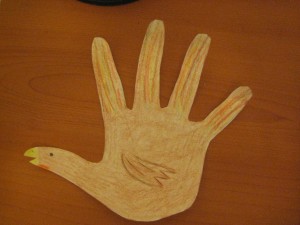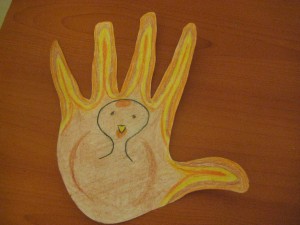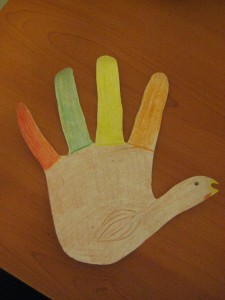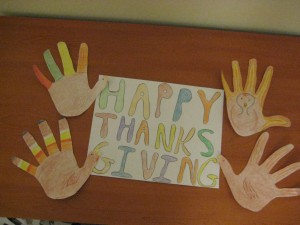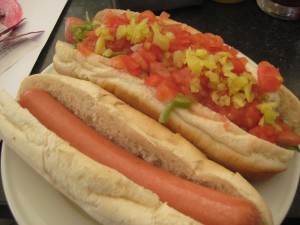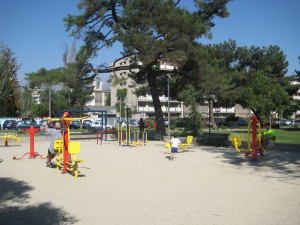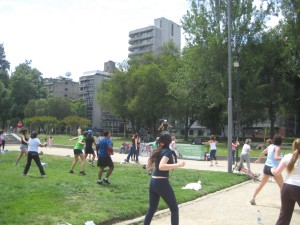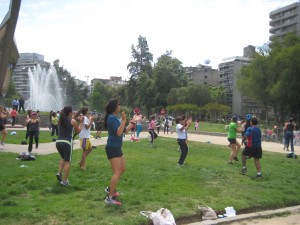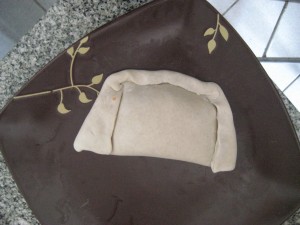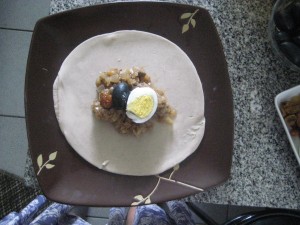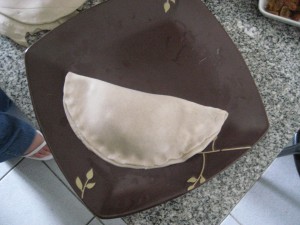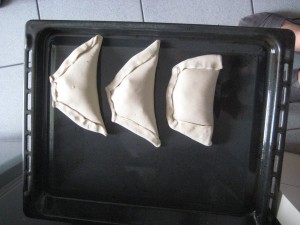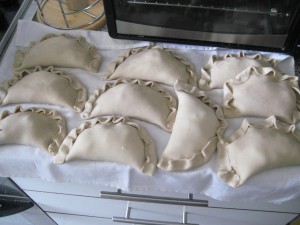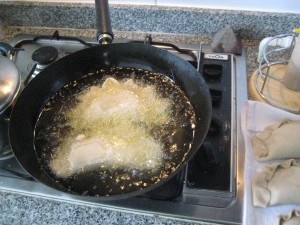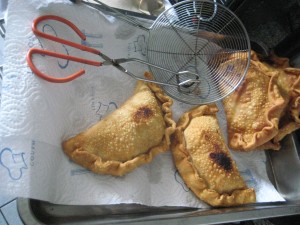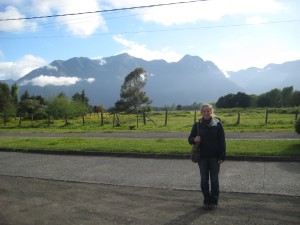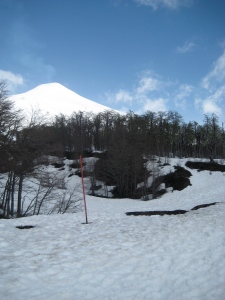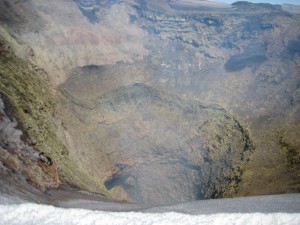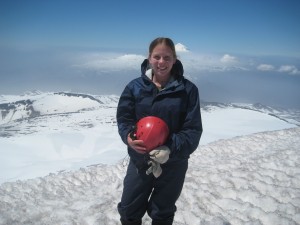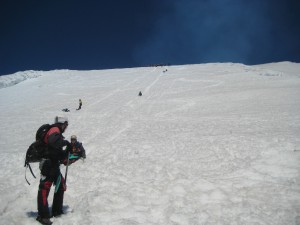California Cantina is the only bar in Santiago known to screen American college football. Its walls sport sun pictures of palm trees lined SoCal beaches and its food menu includes hamburgers, sabors de Mexíco, and a warm brownie with ice cream. Most of the waitresses speak English and the door is adorned with an outline of the California grizzly bear.
This Saturday night, it was crammed full of gringos including 16 Stanford students all rooting for their team in what many of the more hard-core fans said was “the most important game of the season.” Several of us prefer label the next games the most important game of the season BEAT CAL! but in terms of national rankings, this one was pretty important. Stanford V. Oregon occupied one of the three TV’s behind the bar. The other two were airing a bloody boxing tournament and the Hooters 15th Annual International Swimsuit Contest. The evening went something like this.
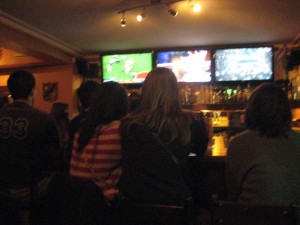
Oregon kicks off. After a minute of Stanford playing the ball goes back to Oregon.
Boxers weigh in and are looked over by an official wearing latex gloves before entering the ring.
The men in the bar cheer as a sleazy man and sleek blonde welcome everyone to the Hooters Swimsuit Contest.
Ball Back to Stanford, 4 downs end in a punt with no return. Ball back to Oregon on 47 yard line.
Boxers circles the ring galloping sideways on their tiptoes, fists ready.
Dozens of well endowed women in sequin take the stage with the sleazy announcer. By the time he finished making a speech we couldn’t hear their talking their overworked smile muscle must have been aching.
A blonde in a corset style halter top turns to receive a juicy smooch from her boyfriend at the bar.
TOUCHDOWN OREGON! A high-pitched squeal of rage comes from one of the more inebriated Stanford fans who dramatically presses a hand with red-painted fingernails over her eyes.
Kick! Punch! Elbow in the side! Man down with a blow across the face.
The ladies are back in their swimsuits each one only covering the bare minimum. They are all bikinis and most of them include rhinestones, sequins and/or shiny fabric.
The cardinal fights to score before the end of the first quarter but closes with a score of 0-8.
A mountain of cheesy nachos passes by on its way out to the patio.
In a graphic closeup shot, a coach applies pressure with a cotton swab to a gash in his boxers eyelid. Blood gurgles out but the stoic boxer doesn’t flinch. He spits blood out of his unnaturally red moth.
A cheer goes up for a pouting hooters waitress from Florida as she poses at the end of the catwalk in a teal bikini designed to show equal amounts of cleavage on either side of each rectangular top piece. The bottom piece looks like a cross between a thong and a world-class wedgy.
TOUCHDOWN STANFORD! “What does the band do if they don’t make the field goal? Do they just keep playing ‘All Right Now’ or do the let it die down?”
Back in the ring the bloody eyed contender seems to be loosing as blows rain down from his opponent.
The bar tender gets booed out by the men of the bar when he tries to change the hooters channel to a soccer match.
TOUCHDOWN OREGON! Eyebrows furrow as the field goal soars through the posts.
Slow motion replay of the bloody eyed man’s nose and jaw being rattled by a fierce blow from his opponent.
The scene flashes away from the catwalk to one of the contestants jogging along a beach in her minimalist bikini.
A stream of young women with bits of ribbon and party decorations in their hair come through the bar on their way out after a birthday party in a private upstairs room.
Glasses as drained as spirits are boosted by a Stanford field goal.
The coach presses gauze against a fresh wound in the bloody eyed boxers face while another trainer wields another cotton swab against the older wound.
TOUCHDOWN OREGON- calls for fresh pitcher of beer at the bar.
TOUCHDOWN STANFORD- foam slops over the edge of raised glasses.
A foxy Chilean woman tips her head back and blows a plume of cigarette smoke straight up into the already smoky air.
The bloody eyed boxer seems to be making a comeback and deals his opponent a matching wound.
A single hooters contestant presents a swimsuit selection that looks closer to Macy’s underwear than Victoria’s Secret langiere.
TOUCHDOWN OREGON- “If you aren’t rooting for Stanford you don’t exist to me right now.” says the most die-hard, inebriated Stanford fan to a man cheering for Oregon.
The camera zooms in on the straining leg muscles of the boxers locked in combat.
The hooters contestants are now doing group interviews wearing their tight work uniforms.
TOUCHDOWN OREGON- a small group of Stanford fans leaves, unwilling to watch their team lose.
A man who has just finished watching the Notre Dame game tries to explain that the reason we are such unenthusiastic fans is that our team is loosing and smart kids don’t have experience facing adversity.
A trainer wipes the sheen of sweat and blood from his boxer’s heaving chest.
TOUCHDOWN STANFORD! 23-36, a comeback is possible.
Now in matching blue sparkle bikinis the contestants are getting ready to hear the judge’s remarks.
TOUCHDOWN OREGON- our second wind is dampened.
Back in the bar a glass shatters but attracts little attention from the noisy clientel.
TOUCHDOWN STANFORD! A few fans in the doorway return to their seats.
Too bloodied now to be told apart the boxers are rolling on the floor with one’s legs wrapped around the others’ waist.
The contestants all maintain forced smiles and applaud while the finalists are called forward by the sleazy announcer.
The boxers are separated by a referee and to those of us only half watching, it is unclear whether or not there was a winner.
TOUCHDOWN OREGON! Game over but it is too close to the end to leave now.
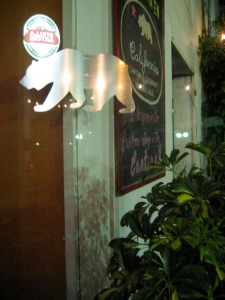
The die-hard Stanford fan gets in a shouting match with a Chilean who doesn’t care much about the game but choose to root for Oregon. Shouting turns to shoving and she leaves crying escorted by the rest of the disappointed and now embarrassed group.

